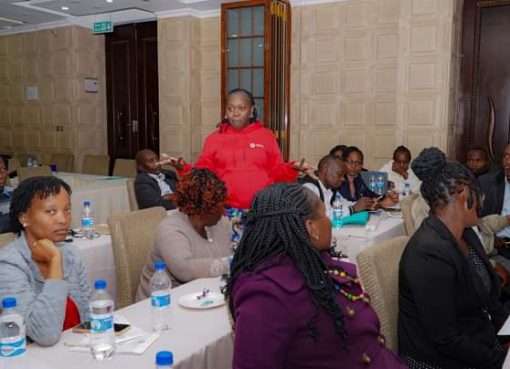The Kenyan government has identified cotton as a key driver towards enabling projections for expansion of the manufacturing sector.
In one of the Big Four action plans, cotton is earmarked as a multipurpose crop that has potential to turnaround the collapsed textile industry, with lint and seed being the principal products.
However researchers note that cotton yields remain low, with the annual production recorded at 25,000 bales (as of 2017) against a potential of 700,000.
Scientists say the main challenge is pest infestation which has reduced the average harvest of cotton lint and seed to 211 and 373 kilograms respectively, per hectare.
Pest control is said to consume an average of 45% of all production costs presenting a major constraint that largely contributes to the collapse of the cotton sub sector.
Crop scientists at Kenya’s premier agricultural research institute KALRO have established that modern biotechnology, specifically BT cotton offers a viable contribution to address this challenge
The crop’s lead researcher Dr. Charles Waturu says BT cotton has an inbuilt mechanism to protect itself from caterpillar pests, also commonly known as bollworm.
“The inbuilt mechanism is from common soil bacteria also known as Bt which stands for Bacillus thuringiensis,” he said.
Trade, Industry and Cooperatives Principal Secretary Betty Maina during a tour of trials farms going on in Mwea on Tuesday said the government has put in Shs. 4 billion to revive Rivatex textile industry in Eldoret where uniforms for the members of the Armed Forces will be sourced.
Ms. Maina said the government through the Big Four action plan is banking on BT cotton to create 50,000 jobs and generate Shs. 20 billion from apparel export earnings per year.
“Cotton production has remained very low due to numerous challenges in the country, key among them pest control and low quality seed. Introduction of BT cotton will address some of these challenges” she said
Principal Secretary Agriculture Research Hamadi Boga who was also in the tour said since researchers on the BT cotton have completed their 17-year journey and come up with the high yielding variety, farmers should expect to commercially grow the cash crop soon.
Boga said BT cotton protects itself from damage by the African bollworm, thus reducing the number of sprays needed from 12 per season to three, and added the reduced number of sprays is beneficial to human health and the environment.
As research on BT cotton enters the second and final phase early next year, ginners and industrialists are upbeat that the collapsed textile sector will be revived.
Kenyans will also no longer depend on imported garments once the sector is up and running while the wearing of second hand clothes (Mitumba), will be a thing of the past.
The two principal secretaries were speaking at one of the seven sites where the first phase of National Performance Trials is being undertaken at Mathangauta village of Mwea in Kirinyaga County, where they also assured Kenyans the entire cotton value chain was set for kick starting.
Dr. John Kimani, the KARLO center manager Mwea, said although the journey was long and challenging, finally farmers will no longer be troubled by the boll worms which had forced most of them out of cultivating the crop.
“Yields for the Bt cotton stand at 7,000 kilograms per hectare while the traditional variety can only yield 750 kilograms on the same piece of land,” Dr.Kimani said.
During the site visit, the two PSs announced that 1000 farmers from 21 counties will have the final National Performance Trails crop in their shambas next year as the government prepares to roll out the crop for commercial production in 2020.
During the occasion the Society for Biotech Farmers of Kenya (SOBIFAK), which the farmers will be using as a platform to articulate their issues was launched with Mugo Magondu being elected its first chairperson.
Dr. Waturu noted Kenya produces an average 20,000 bales against national demand of 200,000 bales of cotton per year
The current dormant ginneries are set to be revived within the next two years once the new variety of cotton is rolled out
In Kirinyaga, a modern ginnery has been lying idle since the mid 90’s after the sector collapsed.
By Irungu Mwangi




